- Mass Planting Techniques for Beautiful Petunia Varieties
- 1. Choose the Right Varieties
- 2. Prepare the Soil
- 3. Planting Techniques
- 4. Maintenance
- 5. Enjoy the Beauty!
- Importance of Seedlings in Mass Planting
- Preparation and Selection of Petunia Seedlings
- 1. Choose a healthy seedling:
- 2. Check the root system:
- 3. Consider the age of the seedling:
- 4. Look for uniformity:
- 5. Harden off the seedlings:
- 6. Provide proper care:
- Creating the Ideal Planting Environment for Petunias
- 1. Choosing the Right Location
- 2. Preparing the Soil
- 3. Fertilizing the Soil
- 4. Planting the Petunias
- 5. Watering and Mulching
- Tips for Properly Planting Petunias
- 1. Choose the right location
- 2. Prepare the soil
- 3. Space the plants properly
- 4. Plant at the right depth
- 5. Water thoroughly
- 6. Provide additional support
- 7. Fertilize regularly
- Watering and Fertilizing Techniques for Mass Planted Petunias
- 1. Watering techniques:
- 2. Fertilizing techniques:
- 3. Mulching:
- 4. Regular monitoring:
- Maintenance and Care for Mass Plantings of Petunias
- Watering
- Fertilizing
- Deadheading
- Weed Control
- Pest and Disease Control
- Pruning
- Winter Protection
- General Care Tips
- Benefits of Mass Planting Petunias
- Questions and Answers:
- What is mass planting?
- What are the benefits of mass planting?
- How do I choose the right plants for mass planting?
- Can I mass plant seedlings?
- How do I prepare the soil for mass planting?
- What is the best time to mass plant seedlings?
- How do I care for mass planted seedlings?
- Videos: Secrets to Growing Huge Hanging Flower Baskets full of Petunias or any other Plants
The beauty and vibrancy of petunias make them a popular choice for gardeners of all levels of experience. With their bright colors and delicate blooms, petunias can add a touch of elegance to any garden or landscape. If you are looking to bring a burst of color to your outdoor space, mass planting petunias is a great option.
Mass planting involves planting a large number of petunia seedlings in a concentrated area to create a stunning display. It is an effective way to make a statement and add visual appeal to your garden. In this article, we will guide you through the process of conducting mass planting on seedlings for three beautiful varieties of petunia.
Before you begin, it is important to choose the right varieties of petunia for mass planting. Some varieties that work well for this purpose include the Superbells, Supertunia, and Wave series. These varieties are known for their prolific blooming and vigorous growth, making them ideal for creating a lush and vibrant display.
Once you have selected your varieties, it is time to prepare your seedlings. Start by filling seed trays or pots with a high-quality potting mix. Sow the petunia seeds thinly on the surface of the mix and cover them with a light layer of vermiculite or fine sand. Keep the trays or pots in a warm and well-lit area, ensuring that the soil remains moist but not waterlogged.
Mass Planting Techniques for Beautiful Petunia Varieties
When it comes to creating a stunning display of petunias in your garden, mass planting is a technique that can really make an impact. By planting a large number of petunia seedlings close together, you can create a vibrant carpet of color that is sure to catch the eye. Here are some tips for effectively conducting mass plantings of three beautiful varieties of petunias.
1. Choose the Right Varieties
Before starting your mass planting, it’s important to choose the right varieties of petunias. Consider the color scheme you want to achieve and select petunia varieties that will complement each other well. Some popular choices for mass plantings include:
- Petunia x hybrida ‘Purple Wave’: This variety produces cascading waves of purple flowers and is perfect for creating a dramatic effect.
- Petunia ‘Supertunia Vista Bubblegum’: With its vibrant pink blooms, this variety adds a pop of color to any garden.
- Petunia ‘Surfinia Deep Red’: If you’re looking to create a bold and dramatic display, this deep red variety is an excellent choice.
2. Prepare the Soil
Before planting your petunia seedlings, make sure to prepare the soil properly. Petunias prefer well-draining soil that is rich in organic matter. Remove any weeds or debris from the planting area and add compost or aged manure to improve the soil’s fertility. Mix in a slow-release fertilizer to provide nutrients to the plants throughout the growing season.
3. Planting Techniques
When conducting a mass planting of petunias, spacing is key. It’s important to give the seedlings enough room to grow and spread out, but also plant them close enough together to create a dense and cohesive look. Here are some planting techniques to follow:
- Use a trowel or your hands to dig a small hole for each seedling.
- Space the holes about 6-8 inches apart, depending on the size of the variety.
- Place each seedling in a hole and gently press the soil around it to secure it in place.
- Water the newly planted seedlings thoroughly to help them establish roots.
4. Maintenance
Proper maintenance is essential for the success of your mass planting. Here are a few tips to keep in mind:
- Water the petunias regularly, especially during dry spells.
- Remove any weeds that may compete with the petunias for nutrients and water.
- Deadhead the flowers regularly to encourage new blooms.
- Fertilize the plants every few weeks with a balanced fertilizer.
5. Enjoy the Beauty!
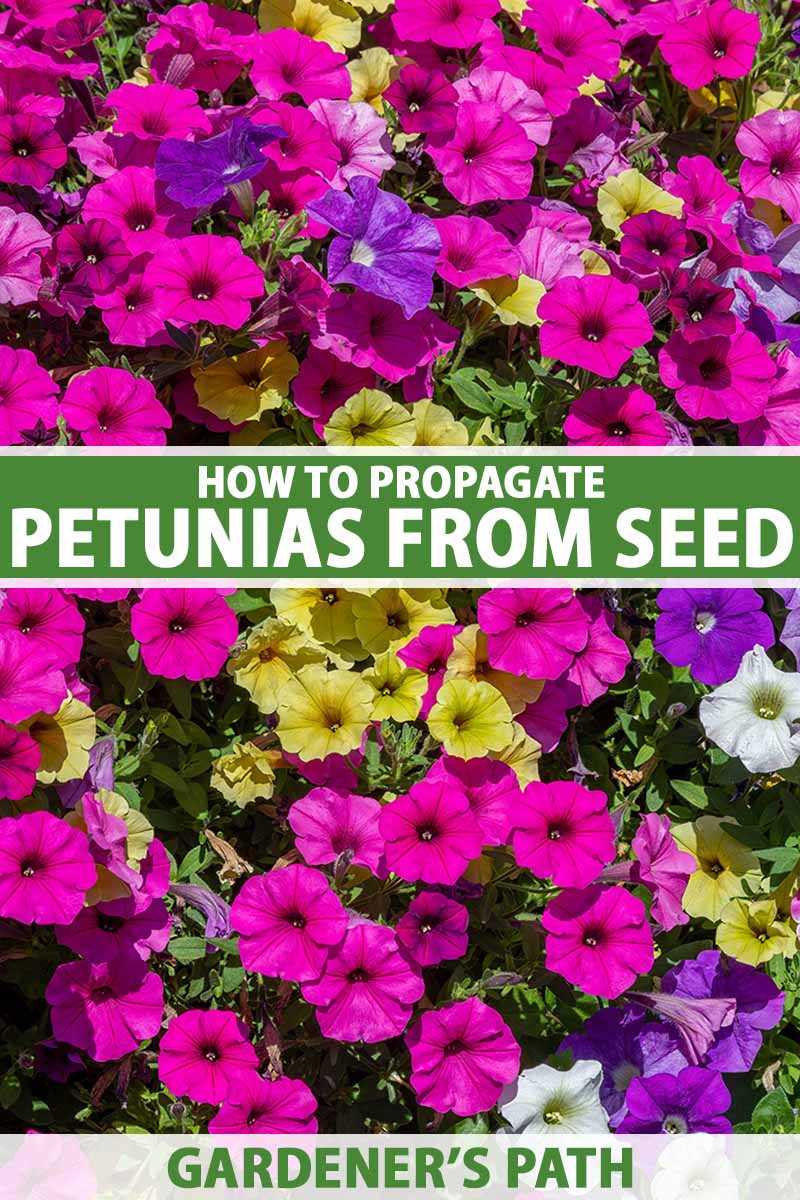
Once your petunias are in full bloom, sit back and enjoy the beauty of your mass planting. The vibrant colors and cascading blooms will create a stunning focal point in your garden. Don’t forget to take some time to admire your hard work!
Importance of Seedlings in Mass Planting
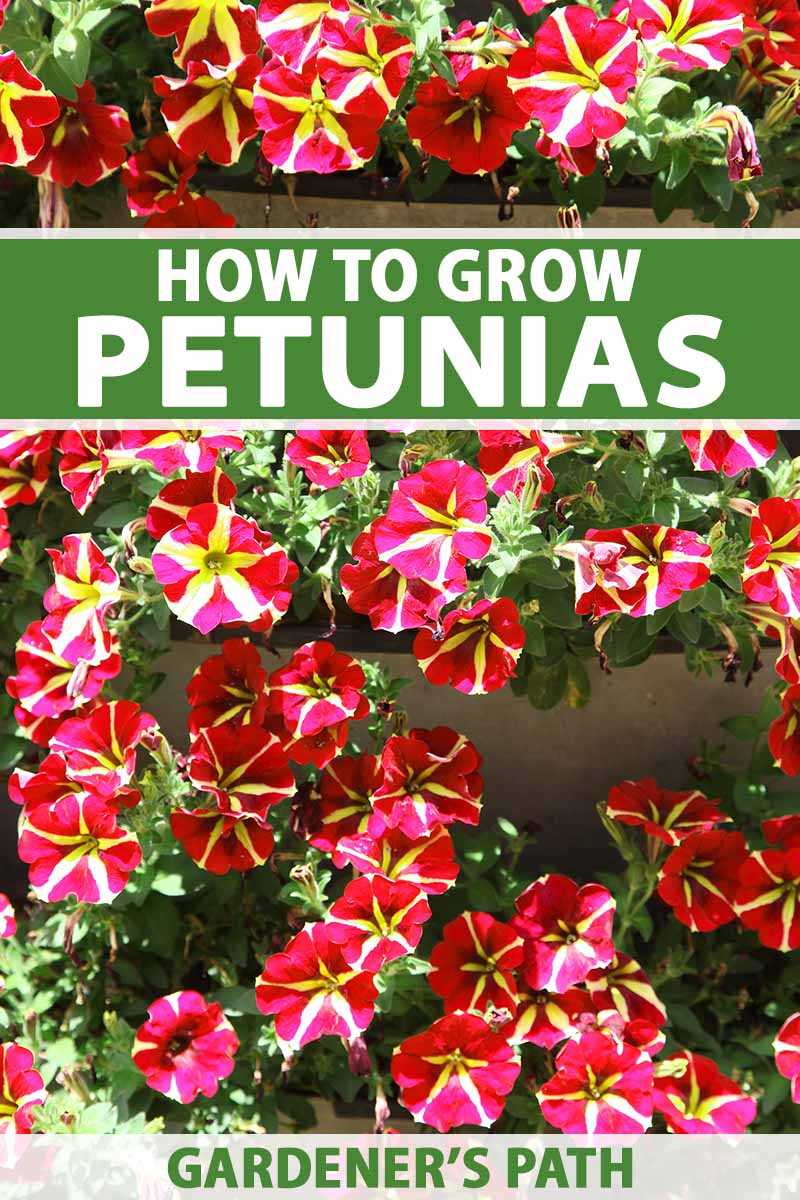
Seedlings play a crucial role in mass planting of petunias. They are young plants that have been grown from seeds and have not fully developed yet. Having healthy and well-established seedlings is essential for successful mass planting. Here are a few reasons why seedlings are important:
- Time and efficiency: Using seedlings allows for a more efficient and faster planting process. Rather than waiting for the seeds to germinate and grow into mature plants, seedlings are already at a stage where they can be easily transplanted.
- Uniformity: When planting a large number of petunias, it is important to maintain uniformity in terms of size and growth. Seedlings provide a consistent starting point, ensuring that all plants in the mass planting have a similar appearance and growth rate.
- Reduced risk: Growing petunias from seeds directly in the ground can be risky. Factors such as unfavorable weather, pests, and diseases can hinder germination and growth. By using seedlings, the risk of failure is reduced, as they have already passed the vulnerable stage and are stronger and more resilient.
It is important to select high-quality seedlings for mass planting. Look for seedlings that have strong stems, healthy leaves, and well-developed root systems. Proper care and nurturing of the seedlings before transplanting will also contribute to their success in mass planting.
Preparation and Selection of Petunia Seedlings
Before conducting mass planting on petunia seedlings, it is important to properly prepare and select the seedlings to ensure the success of the planting process. Here are the steps involved in the preparation and selection of petunia seedlings:
1. Choose a healthy seedling:
Inspect the seedlings to ensure they are healthy and free from diseases or pests. Look for seedlings with strong stems, vibrant green leaves, and no signs of wilting or damage.
2. Check the root system:
Carefully lift the seedling from its pot and check the root system. The roots should be well-developed, without any signs of root-bound or soggy roots. Avoid seedlings with roots that appear stunted or discolored.
3. Consider the age of the seedling:
Choose seedlings that are around 4-6 weeks old. Younger seedlings may not be ready for mass planting, while older seedlings may already be too large and may not transplant well.
4. Look for uniformity:
Select seedlings that are relatively uniform in size and shape. This will ensure even growth and flowering in the mass planting.
5. Harden off the seedlings:
Prior to mass planting, gradually acclimate the seedlings to outdoor conditions by exposing them to increasing amounts of sunlight and outdoor temperatures. This will help prevent shock when transplanting them.
6. Provide proper care:
Continue to provide the selected seedlings with proper care, including regular watering, sufficient sunlight, and appropriate fertilization, to ensure their healthy development and prepare them for mass planting.
By following these steps and carefully selecting and preparing the petunia seedlings, you can set a strong foundation for successful mass planting and enjoy beautiful varieties of petunias in your garden.
Creating the Ideal Planting Environment for Petunias
Creating the ideal planting environment for petunias is essential for their successful growth and development. By providing the right conditions, you can help your petunias thrive and produce beautiful blooms. Below are some steps to create an ideal planting environment for your petunias:
1. Choosing the Right Location
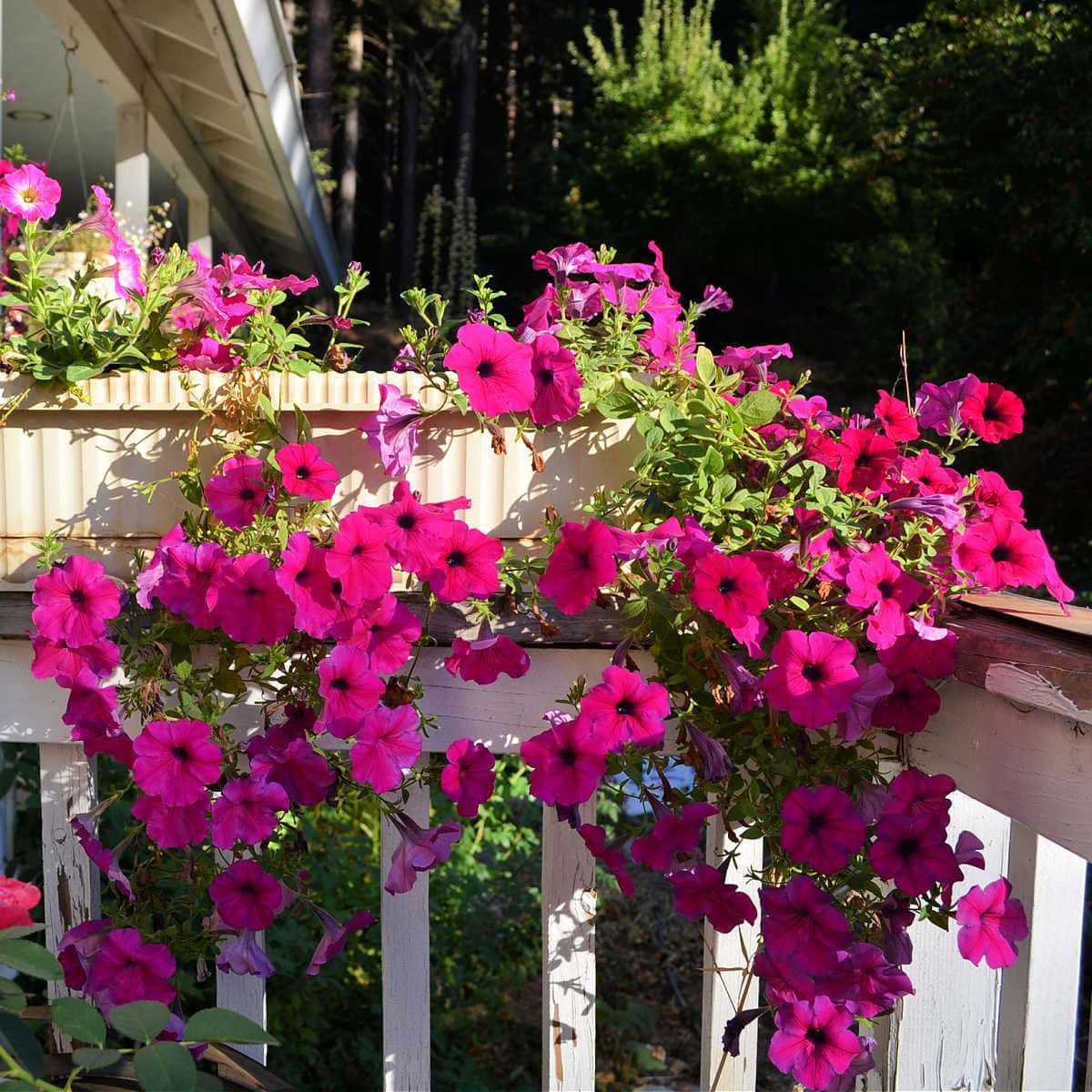
- Select a location that receives at least 6-8 hours of direct sunlight each day. Petunias thrive in full sun and may not perform well in shady areas.
- Ensure the soil in the chosen location is well-draining. Petunias prefer soil that is moist but not waterlogged. Adding organic matter, such as compost, to the soil can improve its drainage ability.
2. Preparing the Soil
- Before planting, remove any weeds, rocks, or debris from the area. These can hinder the growth of your petunias.
- Loosen the soil using a garden fork or tiller to a depth of 8-10 inches. This helps the roots penetrate easily and allows for better water absorption.
- If the soil is heavy and clay-like, amending it with sand or peat moss can improve its texture and drainage abilities.
3. Fertilizing the Soil
- Apply a slow-release granular fertilizer to the soil according to the package instructions before planting. This will provide a steady supply of nutrients to the petunias throughout the growing season.
- Avoid applying too much fertilizer, as this can burn the roots of the plants. Follow the recommended dosage for your specific fertilizer brand.
4. Planting the Petunias
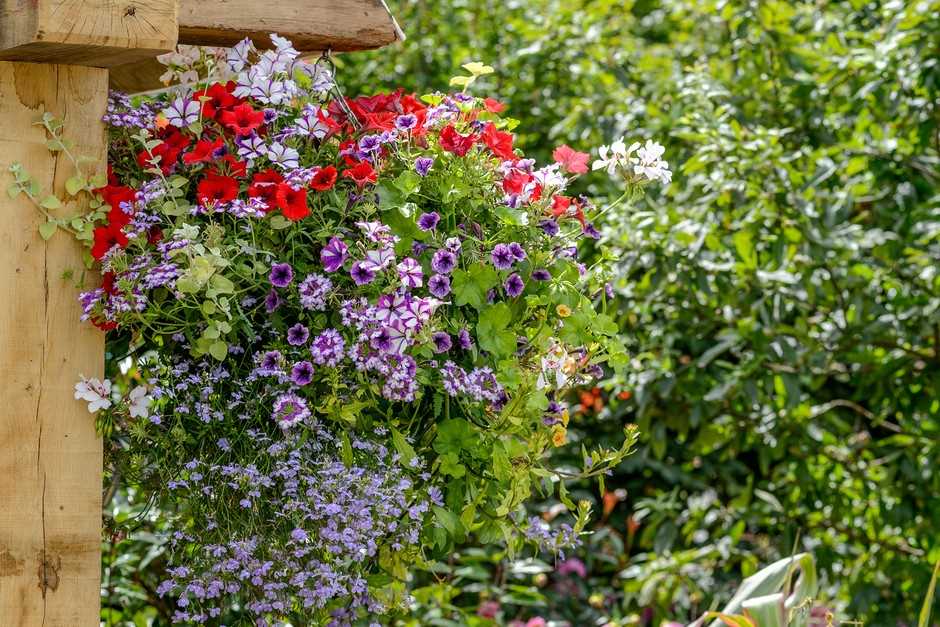
- Dig holes in the prepared soil that are slightly larger than the root ball of the petunia seedling.
- Place the seedling in the hole, ensuring it is at the same level as it was in the original container.
- Backfill the hole with soil and gently press it down around the base of the plant to remove any air pockets.
5. Watering and Mulching
- After planting, water the petunias thoroughly to settle the soil around the roots. Water deeply but avoid overwatering, as this can lead to root rot.
- Apply a layer of organic mulch, such as wood chips or straw, around the base of the plants to help retain moisture and suppress weed growth.
- Regularly check the moisture level of the soil and water the petunias as needed. The soil should be kept evenly moist, but not waterlogged.
By following these steps and providing the ideal planting environment, you can ensure the successful growth and blooming of your petunias. Remember to monitor the plants regularly, provide adequate water and sunlight, and address any issues promptly to keep your petunias healthy and vibrant.
Tips for Properly Planting Petunias
1. Choose the right location
When planting petunias, it’s important to choose a location that receives at least six hours of full sunlight per day. Petunias thrive in sunny locations and may not perform well in shaded areas.
2. Prepare the soil
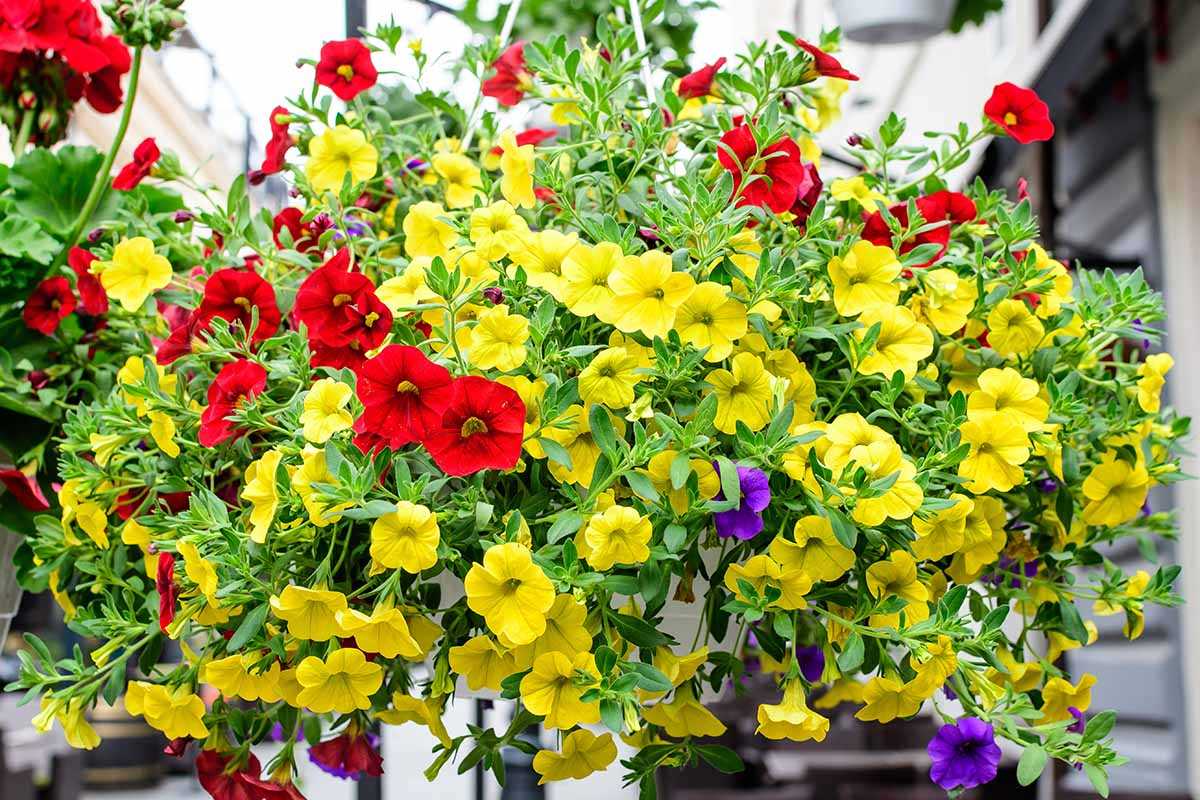
Petunias grow best in well-draining soil, so it’s important to prepare the soil before planting. Remove any weeds or debris from the planting area and amend the soil with compost or well-rotted manure to improve its fertility and drainage.
3. Space the plants properly
Petunias should be spaced properly to allow adequate air circulation and prevent overcrowding. Space the plants according to the specific recommendations provided on the seed packet or plant label.
4. Plant at the right depth
When planting petunias, make sure to plant them at the same depth as they were in their original containers. Gently remove the plants from their containers, loosen the roots, and place them in the prepared holes. Backfill the holes with soil and gently firm the soil around the plants.
5. Water thoroughly
After planting petunias, water them thoroughly to settle the soil and help establish the plants. Keep the soil evenly moist, but not waterlogged, throughout the growing season. Watering in the morning is ideal to allow the foliage to dry during the day and prevent disease.
6. Provide additional support
Some varieties of petunias, such as trailing or grandiflora types, may benefit from additional support. Use stakes or trellises to provide support for tall or trailing plants, helping them to stay upright and preventing damage.
7. Fertilize regularly
To promote healthy growth and abundant blooms, it’s essential to fertilize petunias regularly. Use a balanced fertilizer formulated for flowering plants and follow the recommended dosage instructions. Avoid over-fertilization, as this can lead to excessive foliage growth instead of flowers.
By following these tips, you can ensure that your petunias thrive and provide a stunning display of color throughout the growing season.
Watering and Fertilizing Techniques for Mass Planted Petunias
1. Watering techniques:
- Water your petunias regularly to keep the soil moist, but not waterlogged. Aim for even moisture throughout the day.
- Water deeply, making sure the roots receive enough moisture. Shallow watering may result in weak root systems.
- Water the plants early in the morning or late in the evening to minimize evaporation and ensure the water reaches the roots.
- Use a watering can or a hose with a gentle spray nozzle to avoid damaging the delicate petals and leaves of the petunias.
- Monitor the weather conditions and adjust the watering schedule accordingly. Increase frequency during hot and dry periods, and decrease during periods of rain or high humidity.
2. Fertilizing techniques:
- Apply a slow-release fertilizer to the soil before planting the petunias to provide them with essential nutrients throughout the growing season.
- Alternatively, use a liquid fertilizer diluted as per the manufacturer’s instructions and apply it every two to three weeks during the growing season.
- Make sure to follow the dosage recommendations on the fertilizer packaging, as over-fertilization can lead to excessive foliage growth and reduced flowering.
- When applying liquid fertilizer, water the petunias immediately after to prevent any potential root burn.
- Monitor the growth and appearance of the petunias. If they appear pale or show signs of stunted growth, it may indicate a lack of nutrients, in which case you may need to increase the fertilization frequency.
3. Mulching:
Consider applying a layer of organic mulch, such as bark chips or straw, around the base of the petunias once they are established. Mulching helps retain moisture in the soil, suppresses weed growth, and regulates soil temperature, providing a conducive environment for the petunias to thrive.
4. Regular monitoring:
It is important to regularly check the soil moisture levels and the overall health of the petunias. Keep an eye out for any signs of stress, such as wilting or yellowing leaves, which may indicate insufficient or excessive watering.
Observe how the petunias respond to the fertilizer application and adjust the frequency or dosage if necessary. Regular monitoring and maintenance will help ensure the mass planted petunias remain healthy and vibrant throughout the growing season.
Maintenance and Care for Mass Plantings of Petunias
Watering
Proper watering is essential for the health and vitality of your mass plantings of petunias. It is important to keep the soil consistently moist, but not waterlogged. Water the plants deeply, but avoid getting the foliage wet, as this can lead to disease. Use a soaker hose or drip irrigation system to provide a steady supply of water to the roots.
Fertilizing
Regular fertilization is important to promote the growth and flowering of your petunias. Use a balanced, slow-release fertilizer to provide a steady supply of nutrients throughout the growing season. Apply the fertilizer according to the instructions on the package, taking care not to apply too much, as this can damage the plants.
Deadheading
Deadheading is the process of removing spent flowers to encourage new growth and prolong the blooming period. Regularly inspect your mass plantings of petunias and remove any faded or wilting flowers. Deadheading will not only keep your petunias looking neat and tidy, but it will also stimulate the production of new blooms.
Weed Control
Keeping your mass plantings of petunias free from weeds is important to maintain their health and prevent competition for nutrients. Regularly inspect the area and remove any weeds by hand or use a mulch to suppress weed growth. Avoid using herbicides near your petunias, as they can be sensitive to these chemicals.
Pest and Disease Control
Monitor your mass plantings of petunias for signs of pests or diseases. Common pests that can affect petunias include aphids, slugs, and snails. If you notice any signs of pest infestation, take appropriate measures to control them, such as using insecticidal soap or biological controls. Additionally, be on the lookout for signs of diseases like powdery mildew or botrytis blight, and take steps to prevent their spread, such as providing proper spacing and good air circulation.
Pruning
Occasionally, you may need to prune your mass plantings of petunias to maintain their shape and size. Use sharp, clean pruners to remove any straggly or overgrown branches. Pruning can also help to encourage branching and a fuller growth habit.
Winter Protection
In colder climates, it is important to provide winter protection for your petunias. Before the first frost, carefully lift the plants from the ground and transfer them to pots or containers. Keep them in a sheltered, frost-free location, such as a garage or basement, until the danger of frost has passed in the spring. Alternatively, you can replant new petunias in the spring if your climate allows for it.
General Care Tips
- Monitor the weather conditions and adjust watering accordingly, providing more water during hot and dry periods.
- Remove any yellowing or damaged leaves to maintain the overall health of the plants.
- Avoid overhead watering, as this can lead to leaf diseases.
- Regularly inspect the plants for signs of stress, such as wilting or discoloration, and take appropriate action.
- Provide support, such as stakes or cages, for taller varieties of petunias to prevent them from flopping over.
- Consider applying a layer of mulch around the base of the plants to help conserve moisture and suppress weed growth.
By following these maintenance and care tips, you can ensure that your mass plantings of petunias remain healthy, vibrant, and beautiful throughout the growing season.
Benefits of Mass Planting Petunias
- Enhanced visual impact: Mass planting petunias creates a stunning visual display in your garden or landscape. The dense clusters of colorful flowers make a bold statement and attract attention.
- Easy maintenance: When planting petunias in mass, you can save time and effort in maintenance. They tend to crowd out weeds and reduce the need for regular weeding. Additionally, mass plantings can help retain moisture in the soil, reducing the frequency of watering.
- Long-lasting blooms: Planting petunias in mass ensures a continuous display of blooms throughout the season. With their prolific flowering habit, these plants produce an abundance of vibrant flowers that can brighten up your garden for several months.
- Attracts pollinators: Mass plantings of petunias not only please the human eye but also attract important pollinators such as bees and butterflies. These beneficial insects play a vital role in the ecosystem by helping plants reproduce through pollination.
- Creates a cohesive design: Mass planting petunias allows you to create a cohesive design in your garden or landscape. You can choose color combinations and patterns, creating a cohesive and harmonious look that ties the entire space together.
- Effective use of space: Mass planting petunias is a great way to maximize the impact of a limited garden space. By planting them close together, you can fill in gaps and create a lush and full look, even in small beds or containers.
- Cost-effective: Planting petunias in mass can be a cost-effective way to achieve a beautiful garden. Buying and planting a large number of seedlings at once is often more affordable than purchasing individual plants. Additionally, their long-lasting blooms provide excellent value for money.
These are just a few of the benefits of mass planting petunias. Whether you want to create a striking display in your garden or landscape, attract pollinators, or maximize a small space, planting petunias in mass is a great option.
Questions and Answers:
What is mass planting?
Mass planting is a gardening technique where a large number of plants are grouped together in a single area to create a bold and dramatic impact.
What are the benefits of mass planting?
Mass planting can create a visually stunning effect in the garden by showcasing a large number of plants of the same variety. It also helps to conserve space and make the garden appear more full and lush.
How do I choose the right plants for mass planting?
When choosing plants for mass planting, it is important to consider their growth habit, color, and texture. Look for plants that have a compact and bushy growth habit, as they will create a dense and full effect when planted together. Also, choose plants with complementary colors and varied textures to add visual interest.
Can I mass plant seedlings?
Yes, seedlings can be mass planted. In fact, planting seedlings in large numbers can be a cost-effective way to create a mass planting effect. However, it is important to ensure that the seedlings are strong and healthy before planting them in large groups.
How do I prepare the soil for mass planting?
To prepare the soil for mass planting, start by removing any weeds or grass from the area. Then, loosen the soil with a garden fork or tiller to ensure good drainage. Add organic matter, such as compost or aged manure, to improve the soil’s fertility. Finally, level the soil and water it thoroughly before planting.
What is the best time to mass plant seedlings?
The best time to mass plant seedlings is usually in the spring, after the danger of frost has passed. This gives the seedlings plenty of time to establish themselves before the heat of summer. However, it is important to check the specific planting instructions for the variety of seedlings you have, as some may have different timing requirements.
How do I care for mass planted seedlings?
To care for mass planted seedlings, water them regularly, especially during dry periods. Apply a layer of mulch around the plants to help conserve moisture and suppress weeds. Remove any dead or damaged plants promptly to prevent disease spread. Finally, fertilize the seedlings according to the instructions on the fertilizer packaging to ensure healthy growth.







